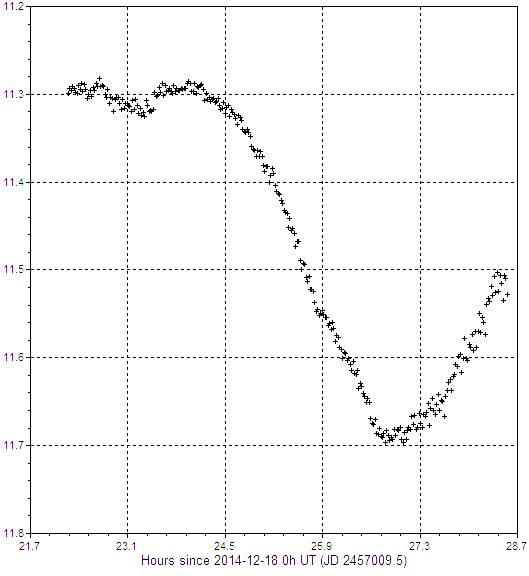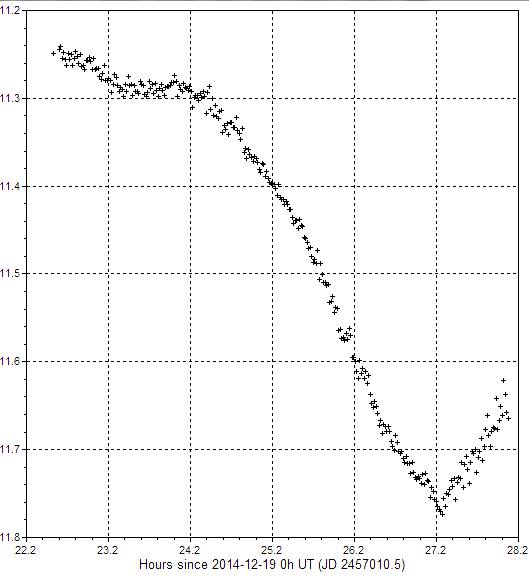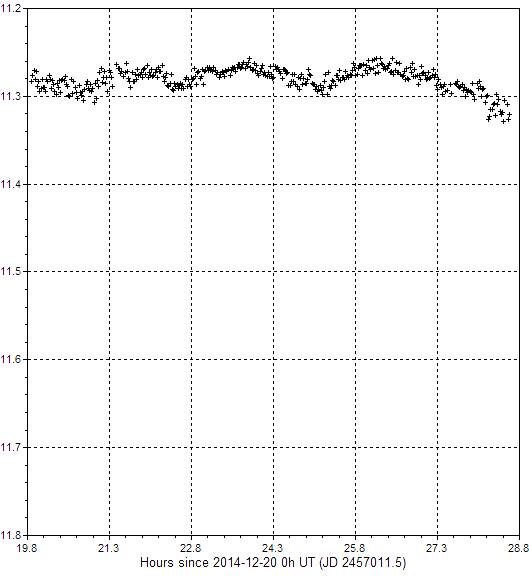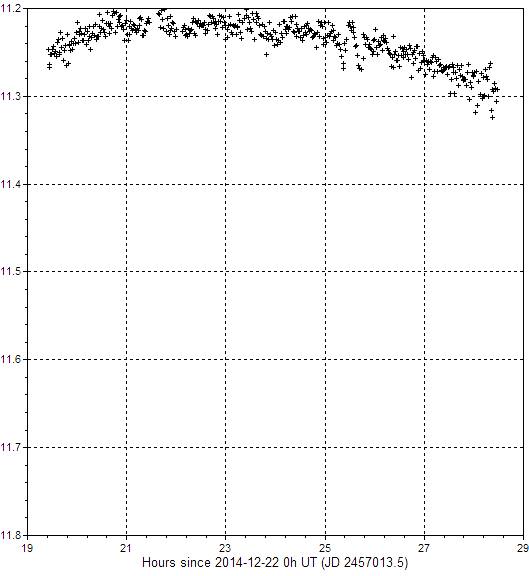AV CMi
November 2014 - Today
Observing schedule for the transits in the binary system AV CMi
July 23, 2014
Observational goal
We want to investigate, under what circumstances the transit of the possible third body is observable during a time of primary and secondary minimum.
For this purpose, we calculated exactly when a transit of the third body occurs within a ± 60 min time difference from the binary minimum. The total number
of critical observations during the minima, are 6 (3 for the primary and 3 for the secondary respectively). In order to accurately derive the transit signal
from the observed lightcurves (if one exists), we must have some calibration observations. In other words we must have the complete lightcurves of the
system during a primary and a secondary minimum. This is why the minimum number of observations required (for a perfect lightcurve sample) is 4.
For all of the proposed observations we dont need the use of a specific filter (we already expect a high S/N).
July 23, 2014
Observational goal
We want to investigate, under what circumstances the transit of the possible third body is observable during a time of primary and secondary minimum.
For this purpose, we calculated exactly when a transit of the third body occurs within a ± 60 min time difference from the binary minimum. The total number
of critical observations during the minima, are 6 (3 for the primary and 3 for the secondary respectively). In order to accurately derive the transit signal
from the observed lightcurves (if one exists), we must have some calibration observations. In other words we must have the complete lightcurves of the
system during a primary and a secondary minimum. This is why the minimum number of observations required (for a perfect lightcurve sample) is 4.
For all of the proposed observations we dont need the use of a specific filter (we already expect a high S/N).






